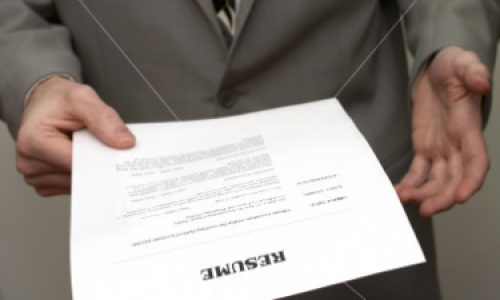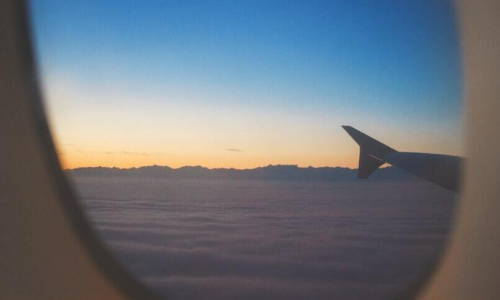
This article was originally published by SFU SIAT student, Alireza Mogharrab, on UX Planet.
Is your UX research impacting the product design cycle in a good way? If your answer is not a big fat YES, then keep reading. In this post, I’m going to talk about a few things I learned conducting usability studies which can help your UX research make an impact and help your product team to create an exceptional user experience. I recently attended the Radical Research Summit and heard an interesting talk from Microsoft’s Joe Munko, about how UX research should influence product design. That being said I know it is not easy, UX research is a messy process but it is all part of the package.
Recruit the Right User
Believe it or not recruiting the right user for your usability test is even more important than the test itself. If you are a small UX agency or a multinational enterprise, you will have challenges when looking for the right people to recruit. Let’s assume you have a participant pool or use an agency to recruit, you should always ask yourself: “Do they represent your target audience?!” If the users you recruit are not representative of the majority of users your team is designing for, then your test will not result in valuable insight to share with the product development team.
If your team has already created a user persona, then try to recruit users as close to the persona as possible. If your team does not have a persona created and there isn’t time to do so, simply chat with your key stakeholders in the product team and find a few key potential characteristics which can help you to identify who you are targeting [and don’t be surprised if they don’t know!].
Also, avoid professional participants. Believe it or not, some people make a living out of being professional usability study participants. They sign up at multiple agencies and for every user study available. This can cause a dramatic bias in your research. These types of participants will try to please you and say what you like to hear, instead of providing a genuine response which is what you need to influence smart decisions.
Be Aware!
People behave differently when they are observed. It is a fact. The goal here is to make users as comfortable as possible so they perform the tasks as close as possible to how they would in a regular situation. Make them feel comfortable and build rapport.
Be a Politician and Befriend Stakeholders
Being a good listener is not just helpful within the usability room and with users.
“50% of my time is devoted to research planning, execution or analysis, and the other 50% involves politics”.
- Tomer Sharon, IT’S OUR RESEARCH:
Listen carefully to your stakeholders for two reasons. First, to understand what insight they hope to gain from the usability test. This will inform your usability study design. Second, to try to understand their perspective and what they believe about the product you are testing. This will help you to frame your report and make it consumable.
Bring Key Stakeholders to the Usability Table!
This is MAGIC! Not only does it help you get support from stakeholders but also allows the product developers to gain first-hand experience of watching a user struggle to figure out how to make sense of a feature. Sometimes a product design team, developers and project managers are so immersed in their work they may not consider if their intended users can make sense of the products. Make sure to tell stakeholders not to interrupt the session and not to talk to the participant unless you say so. Ask them to keep their questions for the end if you plan to have any.
Get a Good Night Sleep Before the Test Day
If you already scheduled an intense day of testing with users, and if sessions are long, chances are that you may get tired of hearing feedback and lose focus, which participants can easily tell and may affect their responses. This is critically important if you are the moderator!
Listen and Nudge and Don’t ask 'Yes/ No" Questions!
Aim for open-ended questions, and avoid those that can be answered with a simple yes or no. Not only will these questions not have any qualitative insights, but they might also force users to give you false data as they want to give the “correct answer”. Instead, focus on asking questions that give you insight about why a certain thing happens or how it affects the user.
Encourage Talk but do Not Lead the Conversation
In other words listen! It is the most important skill a UX researcher must have especially when it comes to interviewing and moderating usability studies. Be an active listener, make eye contact appropriately.
This is Not a Lecture: Practice Lean Notetaking
Do not try to take notes from everything. This won’t help you for a quick analysis at the end. Being a good note taker isn’t easy. Here is how I try to take notes:
- I make note of the things that surprise me [unexpected behaviors].
- When a user gets confused and struggles to use a feature I make sure to note why they struggled, not just the fact that they struggled.
- When I see or hear something from a user that might answer a stakeholder question.
If you can, try to have someone else to take notes and focus on being a good moderator. Make eye contact if it helps to build rapport but do not distract the user.
Do Not Recruit the Same Users for the Future Iteration of the Same Product
The nature of the iterative design process indicates that you make something, you test it and make it better and test it again. This means you will need to test the same feature over and over and over again as it improves. Users who already tested a product will have prior knowledge, therefore having them test another iteration of the same feature might not give you the insight you look for. That being said, cases are different. Sometimes you want to know if a certain product pleases the current users, and in that case, you may actually recruit users who have prior knowledge.
Beyond the Blog
-
To learn about co-op opportunities for SIAT students, visit the School for Interactive Art and Technology Co-op homepage.














